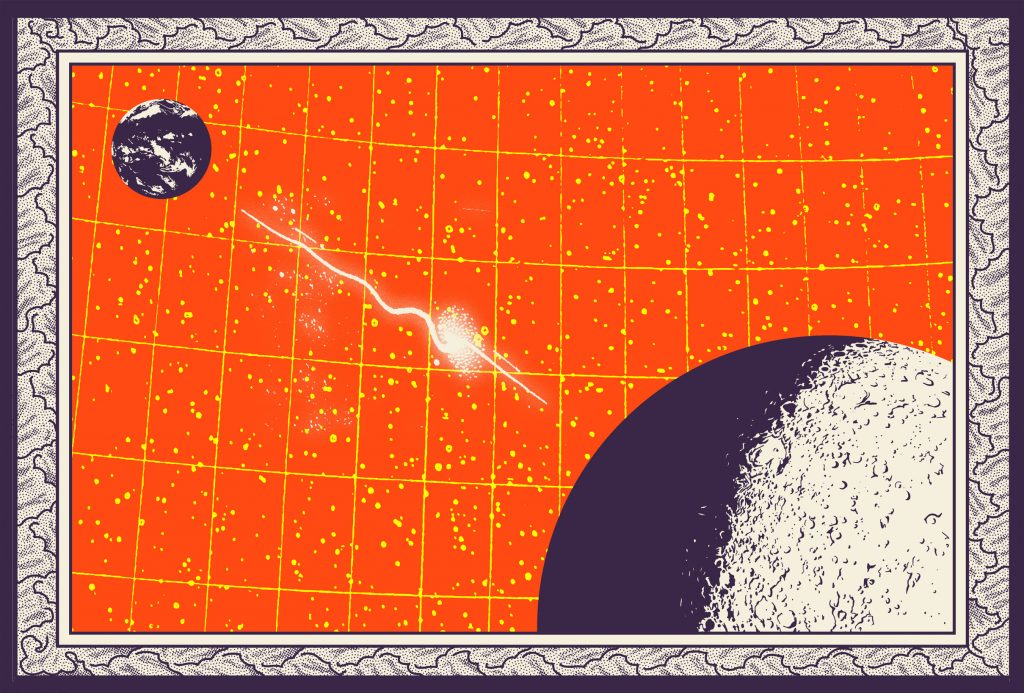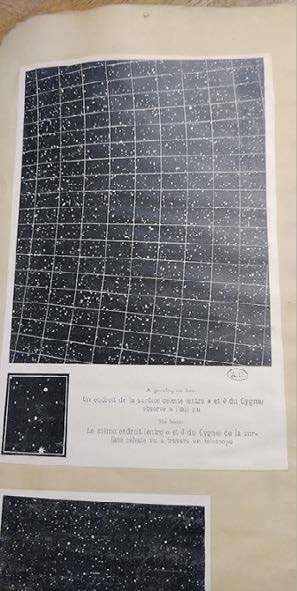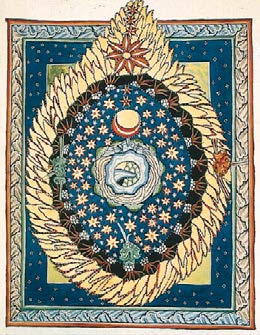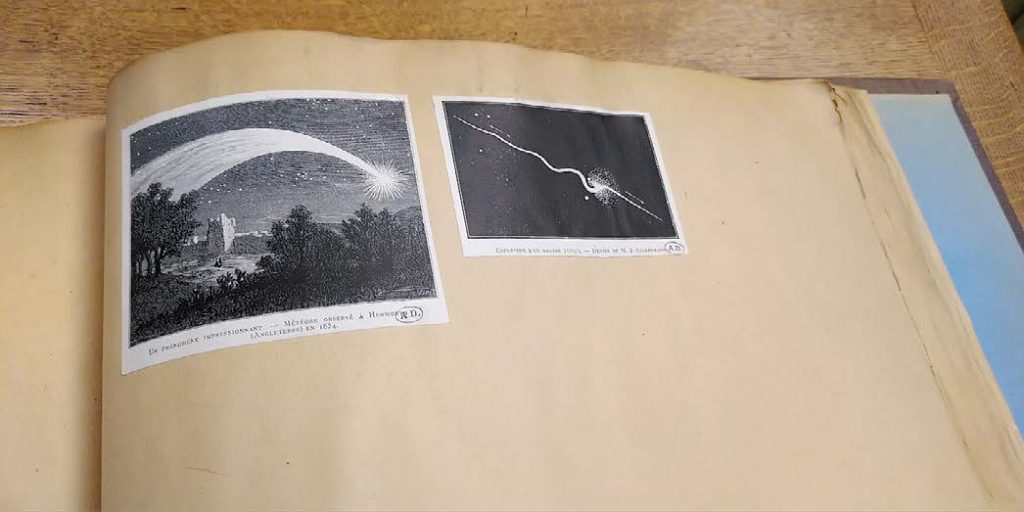We are highlighting the last artworks in the Art for Artemis project featuring work from design students from all over Europe. Two artworks will be selected to accompany the third European Service Module on its trip from the Airbus integration hall in Bremen, Germany, and all artworks will be on display at an exhibition in Bremen. Today’s artwork is by Tessa Kugel from the Beaux Arts de Paris, France to follow on from our feature on French contributions to the European Service Modules. She answered our questions below:

What school are you studying at and what degree?
I’m currently finishing my Master’s Degree at the Beaux Arts de Paris.
Tell us about the technique used to make your Art for Artemis piece
It’s a digital drawing with elements of collage as well. The comet (or rocket, or light) connecting Earth to the Moon and the background are pictures taken from the Fond Maciet albums of the Mudée des Arts Décoratifs’ Library in Paris. The frame is inspired by Scivias, Codex illuminatus by Hildegarde de Bingen (ca. 1180), a drawing representing the cosmos inside an egg.



What inspired you to make the artwork and who are your inspirations in general?
I wanted the piece to be simple and evoke a little bit the space exploration posters and graphics of the past century while using visual elements that are both older and more recent. I generally like to take elements of different periods to give an achronic feeling.
Do you have any thoughts to share about the Moon and human spaceflight?
Studying exoplanets was my childhood dream job and making art in collaboration with the ESA is making me reconnect with this. I think it’s important to stay critical of the uses we make of human spaceflight, but space travel as a whole stays very exciting nonetheless!

Answers in French below:
What school are you studying at and what degree?
Je suis en train de préparer mon DNSAP aux Beaux-Arts de Paris
Tell us about the technique used to make your Art for Artemis piece
C’est un dessin numérique avec des éléments de collage. La comète (ou le bolide, ou la lumière) qui relie la Terre à la Lune et le fond sont des images trouvées au Fond Maciet de la bibliothèque du Musée des Arts Décoratifs de Paris. Le cadre est inspiré du Scivias, Codex illuminatus de Hildegarde de Bingen (v. 1180), une enluminure qui représente le cosmos contenu dans un œuf. L’image de la Lune a été inspirée du rendu de la face cachée de la Lune par le NASA’s Scientific Visualization Studio.
What inspired you to make the artwork and who are your inspirations in general?
Je voulais réaliser une pièce simple qui évoquerait un peu les affiches et les graphiques pour l’exploration spatiale du siècle dernier, tout en utilisant des éléments graphiques plus récents et plus anciens. Généralement j’aime reprendre des éléments de périodes différentes dans mon travail pour lui donner un aspect achronique.
Do you have any thoughts to share about the Moon and human spaceflight?
Travailler dans l’étude de l’espace et des exoplanètes était un peu mon rêve quand j’étais en primaire et réaliser une œuvre d’art en collaboration avec l’ESA me permet de retrouver cela. Je pense que c’est important de rester critique à l’égard des usages que l’on fait du vol spatial habité, mais l’exploration spatiale dans sa globalité reste très passionnante.

 Automated Transfer Vehicle page
Automated Transfer Vehicle page ATV blog archive
ATV blog archive
Discussion: no comments